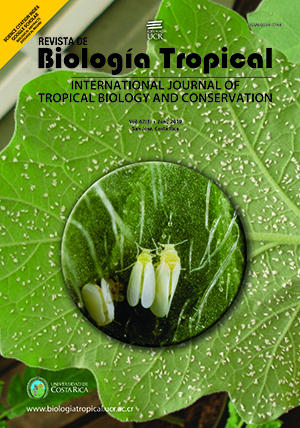Resumen
Desde inicios del decenio de 1990 y de manera casi simultánea, se empezaron a observar afecciones desconocidas en numerosos cultivos, sobre todo en regiones tropicales y subtropicales. Dichas enfermedades eran causadas por begomovirus hasta entonces poco estudiados. Su vector es la mosca blanca Bemisia tabaci (Hemiptera: Aleyrodidae), de la que no se habían registrado poblaciones tan desmedidas en áreas agrícolas. Ello originó una seria crisis de producción a nivel mundial, con pérdidas millonarias para los agricultores de numerosos países, incluyendo la región de Mesoamérica. Por fortuna, en Costa Rica, algunos centros de investigación, con la colaboración de especialistas extranjeros, han podido profundizar en las causas de este fenómeno, para buscar soluciones fundamentadas en información de carácter epidemiológico. Además de la especie de B. tabaci New World (NW), nativa y previamente conocida, en años recientes han ingresado sendas especies del Mediterráneo (MED) y el Medio Oriente-Asia Menor 1 (MEAM1). Asimismo, se ha detectado la presencia de begomovirus bipartitas, nativos y exóticos, especialmente en frijol común, cucurbitáceas, tomate y chile; además, se detectó el begomovirus monopartito conocido a nivel mundial Tomato yellow leaf curl virus (TYLCV) en tomate. Con base en el conocimiento biológico y ecológico acumulado hasta ahora, en la presente revisión se aporta una panorámica del dinamismo con que se han expresado en Costa Rica las interacciones entre las diferentes especies vectoras y los distintos begomovirus, con énfasis en patosistemas de hortalizas. Se espera que la información aquí presentada permita mejorar el tipo de respuestas prácticas y eficaces de parte de agricultores, extensionistas agrícolas e investigadores involucrados en la producción de hortalizas, frente a problemas actuales o imprevistos.
##plugins.facebook.comentarios##

Esta obra está bajo una licencia internacional Creative Commons Atribución 4.0.
Derechos de autor 2019 Natalia M Barboza, Eduardo Hernández, Alice K. Inoue-Nagata, Enrique Moriones, Luko Hilje






